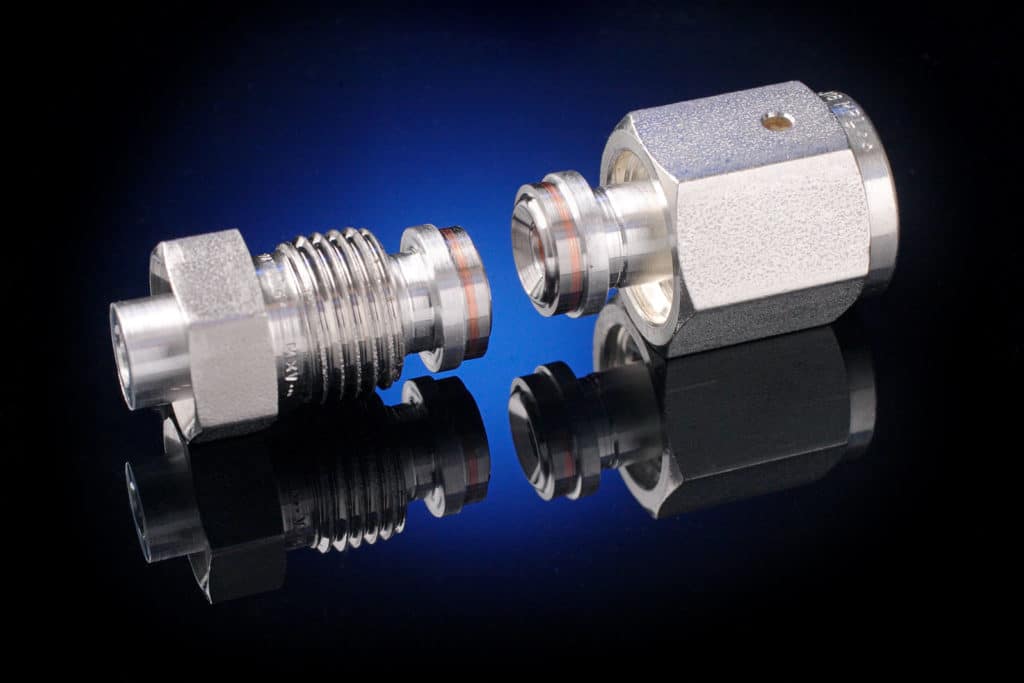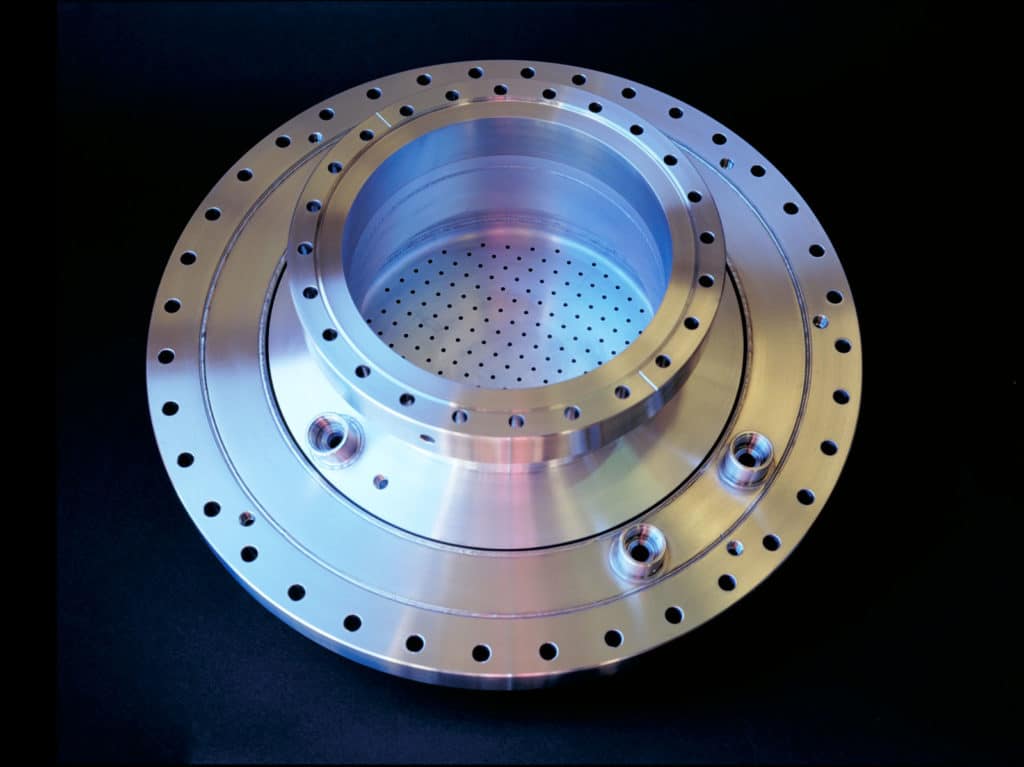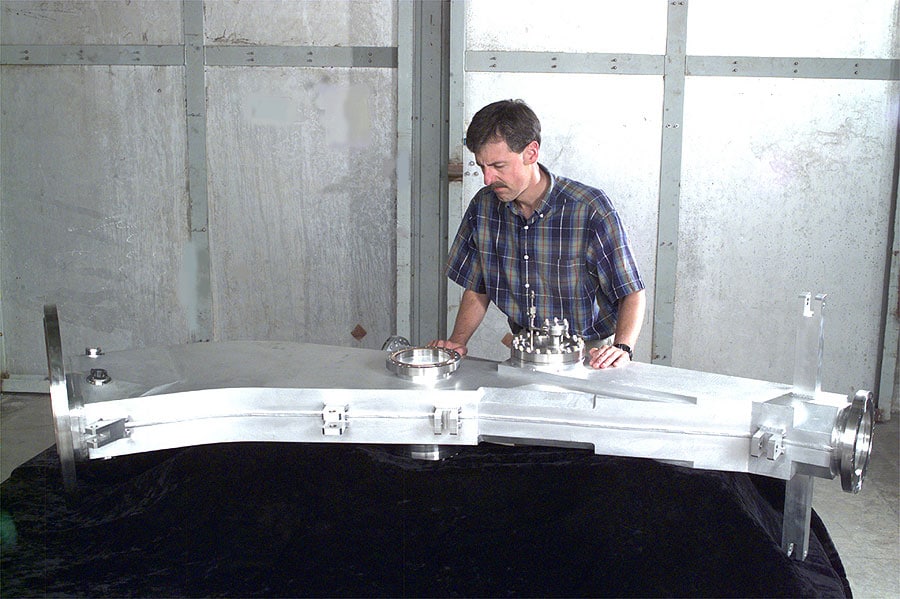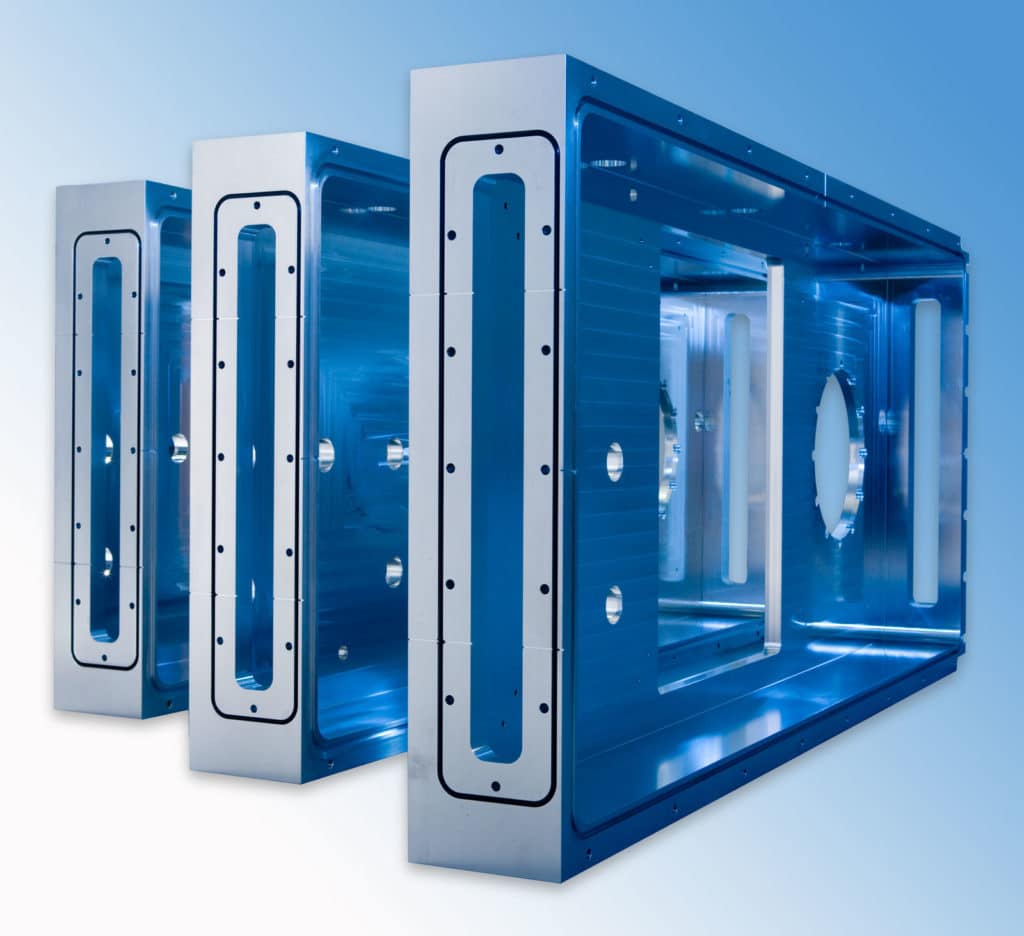Aluminum’s Extreme Vacuum Performance

An effective aluminum chamber, processed according to Atlas specification AVSP-08, entails cleaning and baking surfaces to facilitate the formation of a dense oxide passivation layer through the conversion of hydroxides into stable oxide molecules. The resulting surface inhibits the diffusion of other contaminants, further reducing pumping requirements. Faster pumping equates to smaller and less expensive pumps.
Fluorine gas is a common cleaning agent in aluminum chambers. Atlas aluminum chambers and gas delivery lines are far more resistive to fluorine than those made of stainless steel because Atlas’ AVSP-08 process forms a dense protective oxide layer that make our aluminum highly corrosion resistant. These surfaces can be further protected from halogens by producing even thicker and harder oxide layers through an electrolytic anodizing process.
Excellent thermal properties such as high conductivity make aluminum an excellent vacuum material. With 10x the thermal conductivity and 21x the thermal diffusivity of stainless steel, the extremely low thermal emissivity rates cause our aluminum chambers to bake-out quickly and evenly. The surface properties of aluminum allow full bake-out at 150°C — much lower than stainless. Aluminum chambers heat up quickly and uniformly, bake-outs are faster and more complete with significantly reduced cycle times.
With low nuclear activation, aluminum has a short neutron activated half-life measured on a scale of hours—significant when compared to stainless steel’s scale, which is measured in thousands of years. This offers huge disposal savings and a priceless reduction in potential exposure to personnel.
Aluminum is essentially magnetically transparent (non-magnetic). An aluminum UHV chamber’s low magnetic permeability offers no measurable disruption to electron and ion optics.
With a low Young’s’ modulus (69GPa) of elasticity (1/3 that of stainless steel, 207GPa) aluminum offers outstanding vibration dampening, making it the material of choice for precision synchrotron, semiconductor, and physics applications where excess vibration can have disastrous consequences.
Compact aluminum vacuum chambers with up to 40% smaller footprints are economical alternatives to bulky stainless steel systems, especially when valuable floor space is at a premium. At about 1/3 the weight of stainless steel, aluminum chambers are significantly lighter and require less expensive support structures. Lower weight translates into reduced shipping costs and faster installation times.

Because of its superb machinability (5x to 10x faster than stainless) aluminum chambers can be manufactured with more detail. Aluminum can also be cut, shaped or formed, and extruded quite easily. Chamber features are produced to fit an application rather than tailoring an application to fit a material’s manufacturability limitations—reducing extra equipment and space.
Atlas offers five basic aluminum chamber types: monocoque, plate, tube, extruded, and formed aluminum configurations to give you a variety of design options and complete control of your application.



